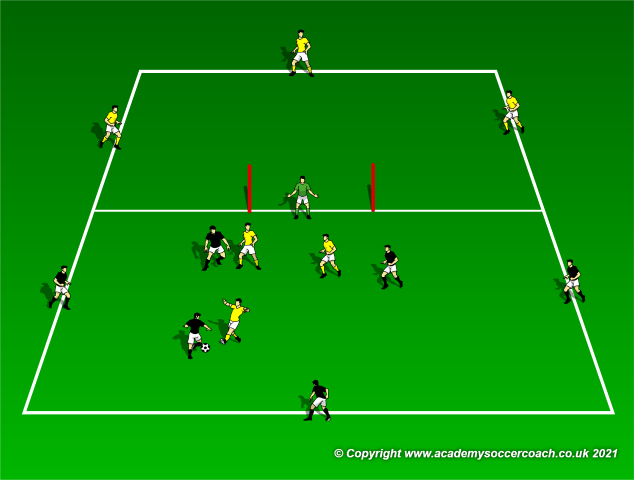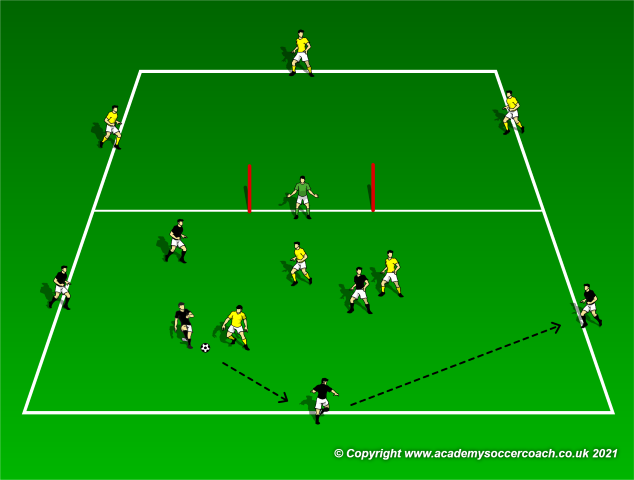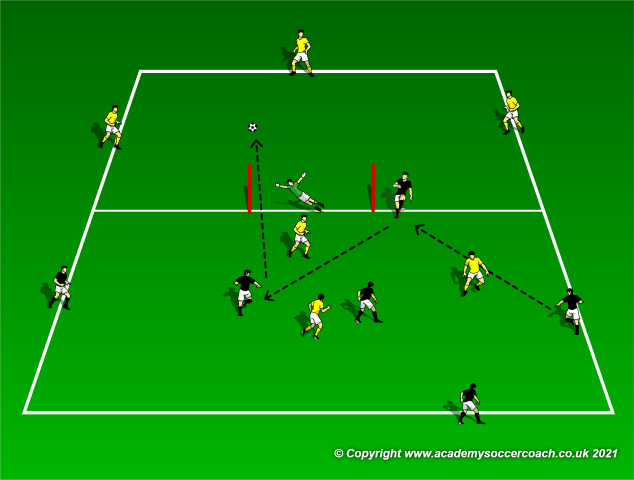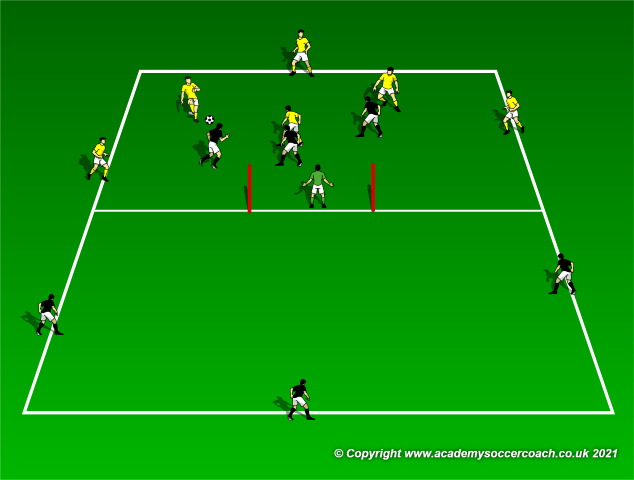By Philip Cauchi
Title of practice: 3v3+3 Continuous Transition Game.
Type of practice: High Intensity Intermittent.
Age bracket: Under 14 upward.
Area of practice: 35 yards in length by 20 yards in width divided into two equal vertical zones. This however depends on the tactical-technical and also the soccer fitness level of the players.
Aim of the practice: For the players to be quick on moments of transition, both negative and positive.
Number of players: Each team has three players inside and three players on the perimeter.
Workload: 6 to 8 blocks of two to four minutes (depending on the level of soccer fitness) each with a recovery period of two to four minutes. During the recovery period the inside players switch their role with the outside players.
Description of the practice:

Each team has three players positioned on the perimeter in their own half of the practice area. A central goal marked by poles is guarded by a goalkeeper who is neutral. When playing in their own half of the practice area, the team in possession plays with a numerical advantage of 6v3. Teams can only score from inside their own half.

The team in possession uses the perimeter players to secure possession of the ball and to find the right moment to finish on goal. They can only score from their half of the practice area. The perimeter players may be allowed to score. However, if we want the inside players to work more on getting unmarked and thus also increase the intensity level (tactical-technical, mental, physical and psychosocial) the perimeter players should not be allowed to score. As the load of the perimeter players is low they will be actively recovering. An active recovery (performing light work) allows for a faster recovery than passive recovery (doing nothing). The team without the ball aims to recover the ball and play it to their teammates in their half.

A goal is scored and the ball gets to the opposite half. The other team now has the ball and are on the offensive. This also goes if the ball was shot wide of the goal. The team that scored the goal must quickly react to the change of roles (negative transition). If the team hadn’t scored and the ball was saved by the goalkeeper, he passes the ball to the defending team in the opposite half of the field.

Both teams must quickly move into the opposite half of the pitch. The new team in possession of the ball must have all of its players inside their own half before they are allowed to score. For the team who now has to defend, if their players are not all inside the opponents’ half if a goal is scored, the goal counts double.
By Philip Cauchi


